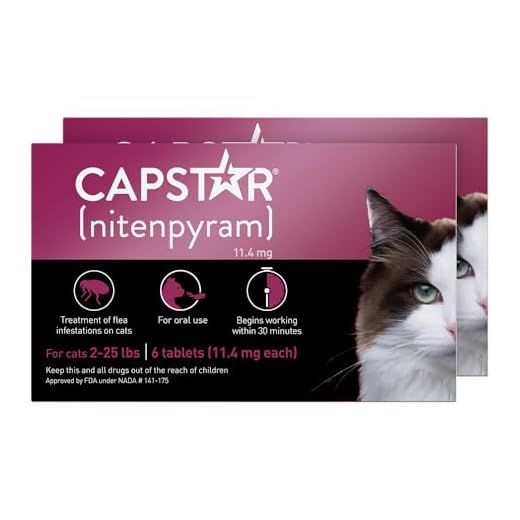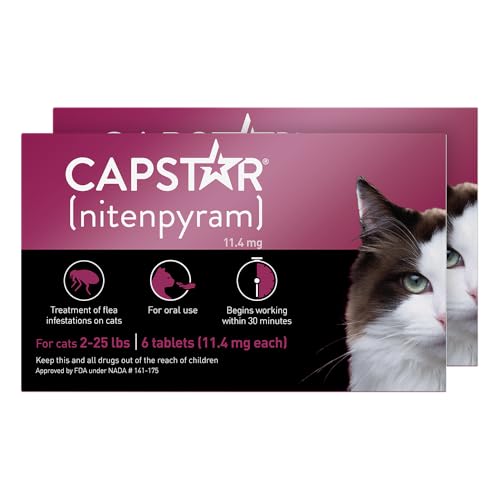



First off, don’t panic. If your furry companion has accidentally consumed some of that topical treatment, the best course of action is to contact your veterinarian immediately. They will provide specific guidance based on the product used and your pet’s weight.
Most products contain ingredients that can be harmful if ingested in significant amounts. Symptoms may include drooling, vomiting, or lethargy. Keep an eye on your buddy for any unusual behavior after the incident.
In the future, consider applying the treatment in a controlled environment where your playful buddy cannot lick it off immediately. This can help prevent accidental ingestion and keep both of you worry-free.
Understanding the Ingredients in Flea Treatments
Always check labels for active components like imidacloprid, fipronil, or selamectin. These substances target parasites effectively but can pose risks if ingested. Each ingredient has its own safety profile and may affect health differently.
Common Ingredients and Their Effects
Imidacloprid, for instance, disrupts the nervous system of insects. While safe for most furry friends, ingestion can lead to drooling or vomiting. Fipronil works similarly, and although it’s generally tolerated, it’s best to monitor for any unusual behavior.
Safety Measures
Store treatments in a secure location, away from curious paws. If ingestion occurs, contact a veterinarian with details about the product and the amount consumed. Quick action can make a difference in ensuring well-being.
Immediate Actions to Take After Ingestion
If you suspect ingestion of topical treatment, act quickly. Here’s what to do:
- Rinse the mouth with water. Use a syringe or a soft cloth to wipe the inside of the cheeks and tongue.
- Monitor for any signs of distress such as drooling, vomiting, or lethargy.
- Contact a veterinarian immediately. Provide details about the product, including the active ingredients and the amount involved.
- If recommended, visit the clinic for an examination. Bring the product packaging for reference.
- Do not induce vomiting unless specifically instructed by a veterinary professional.
Keeping the packaging handy helps professionals assess risks better. Always follow their guidance closely.
Signs of Adverse Reactions to Monitor
If you notice any unusual behavior, it’s crucial to watch for specific signs. Common reactions may include excessive drooling, vomiting, or diarrhea. These symptoms can indicate that something isn’t right after exposure to the treatment.
Behavioral Changes
Pay attention to lethargy or altered appetite. If I suddenly become less active or show disinterest in food, it’s a clear signal to take action. Shaking or tremors might also occur, indicating potential discomfort.
Skin Reactions
Inspect my skin for redness, swelling, or unusual irritation. If you see any rashes or lesions, it could mean an adverse reaction. Additionally, watch for signs of itching or excessive grooming, as this may indicate discomfort.
For further insights on unusual sounds you might hear, check out what bird sounds like a cat meowing.
First off, don’t panic. If your furry companion has accidentally consumed some of that topical treatment, the best course of action is to contact your veterinarian immediately. They will provide specific guidance based on the product used and your pet’s weight.
Most products contain ingredients that can be harmful if ingested in significant amounts. Symptoms may include drooling, vomiting, or lethargy. Keep an eye on your buddy for any unusual behavior after the incident.
In the future, consider applying the treatment in a controlled environment where your playful buddy cannot lick it off immediately. This can help prevent accidental ingestion and keep both of you worry-free.
Understanding the Ingredients in Flea Treatments
Always check labels for active components like imidacloprid, fipronil, or selamectin. These substances target parasites effectively but can pose risks if ingested. Each ingredient has its own safety profile and may affect health differently.
Common Ingredients and Their Effects
Imidacloprid, for instance, disrupts the nervous system of insects. While safe for most furry friends, ingestion can lead to drooling or vomiting. Fipronil works similarly, and although it’s generally tolerated, it’s best to monitor for any unusual behavior.
Safety Measures
Store treatments in a secure location, away from curious paws. If ingestion occurs, contact a veterinarian with details about the product and the amount consumed. Quick action can make a difference in ensuring well-being.
Immediate Actions to Take After Ingestion
If you suspect ingestion of topical treatment, act quickly. Here’s what to do:
- Rinse the mouth with water. Use a syringe or a soft cloth to wipe the inside of the cheeks and tongue.
- Monitor for any signs of distress such as drooling, vomiting, or lethargy.
- Contact a veterinarian immediately. Provide details about the product, including the active ingredients and the amount involved.
- If recommended, visit the clinic for an examination. Bring the product packaging for reference.
- Do not induce vomiting unless specifically instructed by a veterinary professional.
Keeping the packaging handy helps professionals assess risks better. Always follow their guidance closely.
Signs of Adverse Reactions to Monitor
If you notice any unusual behavior, it’s crucial to watch for specific signs. Common reactions may include excessive drooling, vomiting, or diarrhea. These symptoms can indicate that something isn’t right after exposure to the treatment.
Behavioral Changes
Pay attention to lethargy or altered appetite. If I suddenly become less active or show disinterest in food, it’s a clear signal to take action. Shaking or tremors might also occur, indicating potential discomfort.
Skin Reactions
Inspect my skin for redness, swelling, or unusual irritation. If you see any rashes or lesions, it could mean an adverse reaction. Additionally, watch for signs of itching or excessive grooming, as this may indicate discomfort.
For further insights on unusual sounds you might hear, check out what bird sounds like a cat meowing.
First off, don’t panic. If your furry companion has accidentally consumed some of that topical treatment, the best course of action is to contact your veterinarian immediately. They will provide specific guidance based on the product used and your pet’s weight.
Most products contain ingredients that can be harmful if ingested in significant amounts. Symptoms may include drooling, vomiting, or lethargy. Keep an eye on your buddy for any unusual behavior after the incident.
In the future, consider applying the treatment in a controlled environment where your playful buddy cannot lick it off immediately. This can help prevent accidental ingestion and keep both of you worry-free.
Understanding the Ingredients in Flea Treatments
Always check labels for active components like imidacloprid, fipronil, or selamectin. These substances target parasites effectively but can pose risks if ingested. Each ingredient has its own safety profile and may affect health differently.
Common Ingredients and Their Effects
Imidacloprid, for instance, disrupts the nervous system of insects. While safe for most furry friends, ingestion can lead to drooling or vomiting. Fipronil works similarly, and although it’s generally tolerated, it’s best to monitor for any unusual behavior.
Safety Measures
Store treatments in a secure location, away from curious paws. If ingestion occurs, contact a veterinarian with details about the product and the amount consumed. Quick action can make a difference in ensuring well-being.
Immediate Actions to Take After Ingestion
If you suspect ingestion of topical treatment, act quickly. Here’s what to do:
- Rinse the mouth with water. Use a syringe or a soft cloth to wipe the inside of the cheeks and tongue.
- Monitor for any signs of distress such as drooling, vomiting, or lethargy.
- Contact a veterinarian immediately. Provide details about the product, including the active ingredients and the amount involved.
- If recommended, visit the clinic for an examination. Bring the product packaging for reference.
- Do not induce vomiting unless specifically instructed by a veterinary professional.
Keeping the packaging handy helps professionals assess risks better. Always follow their guidance closely.
Signs of Adverse Reactions to Monitor
If you notice any unusual behavior, it’s crucial to watch for specific signs. Common reactions may include excessive drooling, vomiting, or diarrhea. These symptoms can indicate that something isn’t right after exposure to the treatment.
Behavioral Changes
Pay attention to lethargy or altered appetite. If I suddenly become less active or show disinterest in food, it’s a clear signal to take action. Shaking or tremors might also occur, indicating potential discomfort.
Skin Reactions
Inspect my skin for redness, swelling, or unusual irritation. If you see any rashes or lesions, it could mean an adverse reaction. Additionally, watch for signs of itching or excessive grooming, as this may indicate discomfort.
For further insights on unusual sounds you might hear, check out what bird sounds like a cat meowing.








